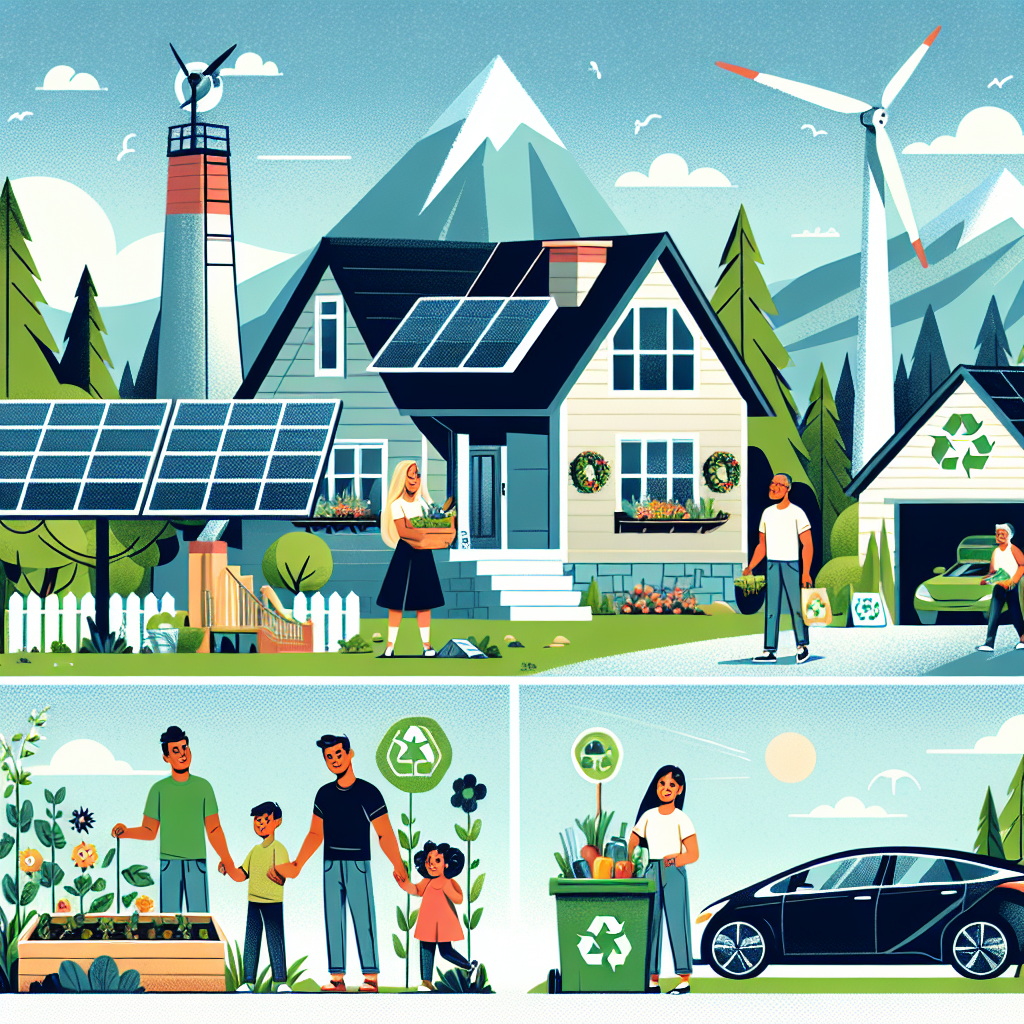Eco-Friendly Practices for Sustainable Living
As the world becomes more aware of environmental issues, the concept of living a green lifestyle gains traction. Whether you are motivated by a love for nature, concerns about climate change, or the desire for a healthier life, adopting eco-friendly practices is a step towards sustainable living. In Canada, where the majestic landscapes and natural resources are a source of national pride, the movement towards sustainability has taken a firm hold. This article will delve into practical ways you can contribute to this movement and integrate sustainable habits into your everyday life.
Understanding the Green Lifestyle
Before we dive into specific practices, let’s clarify what we mean by a green lifestyle. Green living refers to making conscious choices that minimize your environmental impact and promote conservation of resources. It encompasses everything from reducing waste, conserving energy, and using eco-friendly products, to supporting sustainable initiatives and educating oneself and others about environmental issues.
Why Choose a Sustainable Living Path
The decisions we make in our daily lives have a ripple effect on the environment. By choosing a sustainable path, we reduce our carbon footprint, conserve natural resources, and contribute to the health and well-being of our planet and ourselves. It’s about taking responsibility for the impact we have and making positive changes that benefit both the environment and future generations.
Sustainable Living in Canada
Canada is known for its vast wilderness and commitment to preserving it. Sustainable living in Canada involves understanding the local context and adapting global green practices to fit the unique Canadian environment. From recycling programs to community gardens, Canadians have the opportunity to engage in a wide range of eco-friendly activities.
Embracing the Great Outdoors Responsibly
Canada’s great outdoors is a playground for nature enthusiasts, but it’s crucial to enjoy it responsibly. Practices such as following Leave No Trace principles, participating in cleanup events, and respecting wildlife habitats are essential for preserving the country’s natural beauty.
Supporting Local and Sustainable Businesses
One of the most impactful ways to live sustainably is to support local and sustainable businesses. These businesses often have a smaller carbon footprint, as their products don’t need to travel long distances. Additionally, they often employ eco-friendly practices and contribute to the local economy.
Green Practices for Your Home
Your home is an excellent place to start implementing green practices. Here are some ideas to make your living space more eco-friendly.
Energy Efficiency and Conservation
Reducing your energy consumption is not only good for the planet but can also save you money on utility bills. Consider switching to LED bulbs, investing in energy-efficient appliances, and unplugging devices when they’re not in use. Additionally, proper insulation and weatherproofing can significantly reduce heating and cooling costs.
Water Wise Habits
Water is a precious resource, and conserving it is a key aspect of sustainable living. Simple changes like fixing leaks, installing low-flow showerheads, and collecting rainwater for gardening can make a difference.
Waste Reduction and Recycling
Reducing waste is a cornerstone of a green lifestyle. Start by minimizing single-use plastics, composting organic waste, and recycling as much as possible. Remember, the most sustainable option is to reduce consumption, followed by reusing items, and then recycling.
Eco-Friendly Transportation
Transportation is a significant source of greenhouse gas emissions. Embracing eco-friendly transportation methods can have a profound impact on reducing your environmental footprint.
Cycling and Walking
For short distances, consider cycling or walking. Not only do these modes of transportation have zero emissions, but they also provide excellent health benefits.
Public Transit and Carpooling
Using public transit or organizing carpools can significantly cut down on emissions. It reduces the number of vehicles on the road, leading to lower greenhouse gases and less traffic congestion.
Electric and Hybrid Vehicles
If you need a personal vehicle, consider an electric or hybrid model. These vehicles are becoming increasingly affordable and are much better for the environment than traditional gasoline-powered cars.
Sustainable Eating Habits
The way we produce and consume food has a significant impact on the environment. Here are some tips for adopting a more sustainable diet.
Plant-Based Meals
Incorporating more plant-based meals into your diet can reduce your carbon footprint. Agriculture, particularly meat and dairy production, is a major source of greenhouse gas emissions.
Reduce Food Waste
Plan your meals, shop with a list, and store food properly to minimize waste. If you have leftovers, get creative and turn them into a new meal instead of throwing them away.
Support Local and Organic Farmers
Buying from local and organic farmers notifies that the food has a lower carbon footprint and supports sustainable agricultural practices. It also ensures that you’re getting fresh, nutrient-rich foods.
Community Engagement and Advocacy
Sustainable living isn’t just an individual endeavor; it’s a collective effort. Engaging with your community and advocating for eco-friendly policies can amplify the impact of your actions.
Participating in Community Gardens
Community gardens are a great way to grow your own food, learn about sustainable agriculture, and connect with like-minded individuals. They can also help to beautify urban areas and provide habitat for local wildlife.
Volunteering and Education
Consider volunteering for environmental organizations or participating in educational programs. Sharing knowledge and experiences can inspire others to adopt green practices.
Advocacy for Sustainable Policies
Get involved in local politics and support policies that promote sustainability. Whether it’s advocating for renewable energy, public transportation, or green spaces, your voice can help shape a more sustainable future.
Final Thoughts on Green Living
Adopting eco-friendly practices for sustainable living is an ongoing journey. It requires commitment, creativity, and a willingness to change. By making small, consistent changes in our daily lives, we can collectively make a significant impact. Remember, every action counts, and together, we can ensure a healthy planet for ourselves and future generations.
As you embark on your sustainable living journey in Canada, keep these practices in mind. Embrace the challenge, enjoy the process, and take pride in the positive changes you’re making for the planet and your community.










